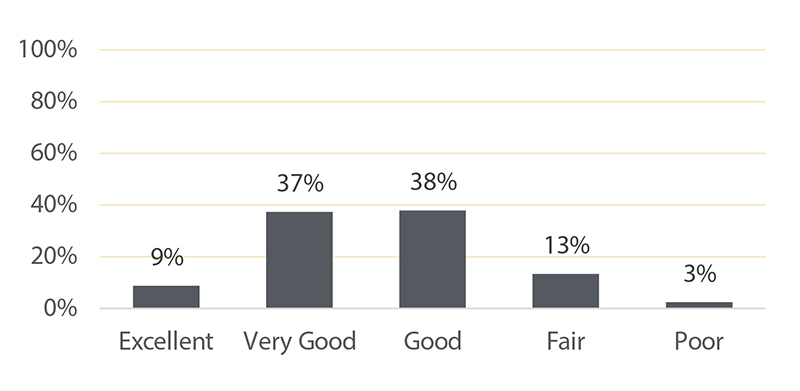Study Shows Increased Consumer Interest in Food and Nutrition Resolutions with Arrival of New Year
Food or nutrition-related New Year’s resolutions were more popular among consumers going into 2024 compared to last year, according to the January Consumer Food Insights Report. This year 25% of consumers responded “yes” when asked if they had any food or nutrition-related New Year’s resolutions, up 6 percentage points from the response to the same question last year.
The survey-based report out of Purdue University’s Center for Food Demand Analysis and Sustainability assesses food spending, consumer satisfaction and values, support of agricultural and food policies, and trust in information sources. Purdue experts conducted and evaluated the survey, which included 1,200 consumers across the U.S.
“The top words that popped up in people’s resolutions showed most consumers were focused on eating healthier by either limiting the intake of foods like sugar or increasing the intake of foods like fruits and vegetables,” said the report’s lead author, Joseph Balagtas, professor of agricultural economics at Purdue and director of CFDAS.
Some of the January survey results were categorized by body mass index (BMI), using the Centers for Disease Control and Prevention’s adult BMI calculator.
“We see a slightly larger proportion of overweight consumers with resolutions, 29%, compared to non-overweight consumers with resolutions, 20%,” Balagtas said. Consumers cited improving health and weight loss as the top motivations behind their resolutions. Weight loss, however, was a primary motivator for 60% of consumers classified as overweight, compared to 26% of non-overweight consumers.
To create this month’s diet and nutrition survey questions, the research team consulted Purdue’s Heather Eicher-Miller, professor of nutrition science in the College of Health and Human Sciences.
“As one might expect, the majority of consumers plan to increase their consumption of fruits, vegetables and water while limiting the intake of salty snacks, sugary foods, regular soft drinks and alcohol,” Balagtas said.
Among consumers who planned to decrease their consumption of a certain food, 46% anticipated cravings as an obstacle. For those trying to eat more of a certain food, a majority anticipated cost as a barrier.
“The survey reveals a strong perception that healthy diets are more expensive than less healthy diets,” Balagtas noted. “And while this perception is true for many of the poorest people around the world, it’s not necessarily the case here in the U.S. Measuring the cost of a diet actually turns out to be a little complex, and it’s something we’re working on at the center. But I think it is possible for most of us in the U.S. to improve our diets in a cost-effective way.”
HOW DO AMERICANS FEEL ABOUT THEIR DIETS?
 In general, how healthy is your overall diet? Would you say it is…, January 2024. Consumer Food Insights. Source: Center for Food Demand Analysis and Sustainability Download image
In general, how healthy is your overall diet? Would you say it is…, January 2024. Consumer Food Insights. Source: Center for Food Demand Analysis and Sustainability Download imageUsing the U.S. Department of Agriculture’s 5-point scale from “poor” to “excellent,” the Purdue researchers found that 84% of consumers rate their diet as “good,” “very good,” or “excellent.”
Consumers who knew of the USDA’s and U.S. Department of Health and Human Services’
Dietary Guidelines for Americans were more likely to report that their diet is healthy. The guidelines provide advice on what to drink and eat to ensure that nutrient needs are met.
“Awareness of the guidelines is a good sign, but when we look at what Americans actually eat compared to the recommendations in the guidelines, the grade on a scale to 100 would be a 58, or F+,” Eicher-Miller said. “So it looks like people might have an optimistic view of their diets.”
In the “Food Expenditures” category, average weekly food spending was $124 in January, up 20% from January 2022. “It is no surprise to see food spending increase, given the high food inflation we experienced during the same period,” noted Elijah Bryant, a survey research analyst at CFDAS and co-author of the report.

